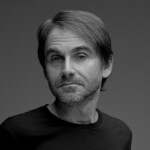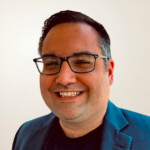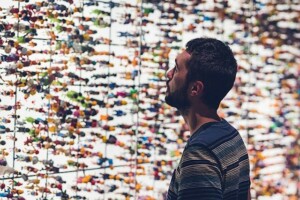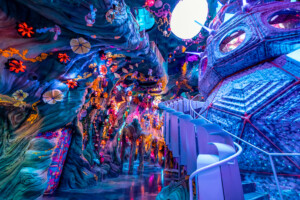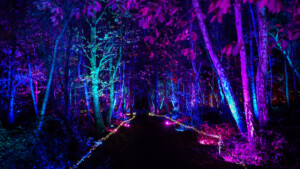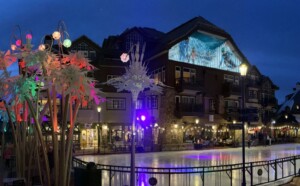France’s celebrated Futuroscope theme park, with its futuristic technology-themed rides and sleek, stylish aesthetic, attracts two million visitors a year.
The brainchild of René Monory, it was founded in 1987 as a park for the people of Poitiers – a combined leisure destination, education centre and research facility.
 Dominique Hummel, President and Director of Futuroscope, spoke to Blooloop about the origins and evolution of this unique park, where spectacle and technology walk hand-in-hand.
Dominique Hummel, President and Director of Futuroscope, spoke to Blooloop about the origins and evolution of this unique park, where spectacle and technology walk hand-in-hand.
An Era of Information Technology
In the 1970s, Poitiers was primarily an industrial region, home to the Michelin and Schlumberger factories. Futuroscope changed all that. Founded in Chasseneuil-du-Poitou in 1987 by a public council, it consolidated Poitiers’ status as a tourist destination and university centre, and opened the town to an era of information technology.
Thirty years on, more than 6000 jobs have been created, a third of them linked to tourism and leisure, two-thirds linked to over 200 enterprises connected with research centres and high schools.
.jpg)
“A real example in France of what a public community can do, ” says Hummel.
Initially, Futuroscope wasn't seen as a theme park but more of a science centre and educational resource.
“Monory’s idea was to create a park linked to the future, linked to the technology of tomorrow, and to give young people an opportunity to understand these technologies.
(1).jpg)
"But, he quickly saw that it was not so easy to be only an education park, especially when you are not in Paris. So the park quickly became an edutainment venue, and since the beginning we have welcomed more than fifty million visitors."
The park remains faithful to its original concept, but approaches futuristic technology from the perspective of entertainment rather than pure education.
.jpg)
“We take the dreams of humanity, the dream of travelling in time, for example, or of teleportation, and we make something fantastic.
“Take time travel, which is one of the dreams we have, we humans. The idea we had was to treat the theme from an original point of view, and to make it fun for all the family.”
Futuroscope’s ‘The Rabbids Time Machine’ theme park ride recently scooped the Themed Entertainment Association’s (TEA) ‘Outstanding Achievement’ award – only the second time a ride from a European amusement park has won the prestigious award. Previous winners include “Space Fantasy, The Ride” at Universal Studios Japan and “Star Tours” at Walt Disney World.
.jpg)
Jora Vision and the 'Rabbids Time Machine' ride
“Ten years ago, we made, another attraction called Arthur , the 4-D adventure (above), with Luc Besson (it also won a TEA award for "Outstanding achievement"), and so I had a good cooperation with Jean Julien Baronnet, who was then the Director General of EuropaCorp, Luc Besson’s company, and who is now president of Ubisoft motion pictures.
“He said that Les Lapins Crétins (the Raving Rabbids) was very popular in France and Europe and that we could do something with this kind of game. The idea was to take the theme of time travel, which was comic and interesting, to make a cross-fertilisation between a video and a video game linked to the rabbits and to their humour and to Futuroscope’s thing, which is the travel through time.”
.jpg)
Dutch creatives Jora Vision were responsible for the ride’s engineering, design and production, using customised ride vehicles and cutting-edge dark-ride technology to create this unique, humour-filled attraction that is suitable for all ages. Jora Graphics came up with the canvasses charting the creative history of ‘Les Lapins Crétins’ and Jora Entertainment crafted the immersive ride’s customised light and special effects.
.jpg)
Guests enter the Time Machine via the Raving Rabbids’ laboratory; watch a pre-ride show 'the Museum des Lapins Crétins', before embarking on a journey (seated on toilets) through time, accompanied by the Raving Rabbids, from the Ice Age to the present day, via Ancient Greece and a number of other eras.
‘The Rabbids Time Machine’ has fast become one of the biggest draws at Futuroscope, helping to increase park attendance by 15% (more than 200k people) since the ride’s opening.
.jpg) Ideas for Futuroscope’s rides come from all sorts of sources.
Ideas for Futuroscope’s rides come from all sorts of sources.
Dances with Robots
An earlier attraction, Dances with Robots, introduced in 2006 and revamped in 2013 with a sound track created by DJ and music producer Solveig, was inspired by an advert for the Renault Picasso, which featured KUKA robots. Hummel contacted KUKA, manufacturers of robots for the car industry, about the possibility of creating an attraction with robots at Futuroscope.
“Robots are important in the future, and are sometimes perceived as an enemy of humans because they take charge, and so on. The idea was to have a bit of fun with that.
“So, that was the beginning of this project, and KUKA made what we wanted: a kind of an adaptation that transformed these robots to accommodate two people. The next idea was to create a kind of dance-floor in which these robots are dancing, and people who want to participate can sit in the cup on the arm of the robot, and dance with the robot. It’s a family attraction: you can do that with your children.
"It’s another way to give a kind of message that these robots can also be our friends.”
.jpg)
Global programmatic marketing
For the last three years, Futuroscope has forsaken traditional digital advertising in favour of global programmatic marketing: today, programmatic advertising represents 10% of the park’s media budget. The automatic acquisition of advertising space makes it possible to target chosen audiences in real-time, and it can be applied to all digital channels – websites, mobile phones, tablets, and digital televisions.
Where the traditional technique would be to identify the specific media corresponding to its main targets, then buying advertising space relevant to this, with programmatic marketing very precise targets are defined, and a total maximum budget. This information is then sent via a ‘trading desk’ to platforms which, using a real-time bidding system, match up the demands of the advertisers with the contacts of the various publishers. The referencing, purchase of search engine commercial links and affiliations all combine to ease the buyer experience, ultimately hastening customers along a ‘buying tunnel’.
.jpg)
“This year, for example, we have made more than fifty percent of our turnover with digital business, " says Hummel. "It’s important, firstly, so that people have information and understand exactly what is proposed. We have on our website more than 10 million unique visitors. The second important factor is business, and as I say, 52% of our turnover is linked to sales on the website. And a leisure park which you visit in one day is very different from a leisure park which is a resort, and for which you also have to sell the night-time, transportation and so on.
“What’s interesting with our website, is that it gives you the opportunity not only to buy tickets but also to buy hotels, to buy transportation and so on. And for us what is interesting is that when people have bought, we know that they will come, so it’s easier to make forecasts, for example, which is really important for smooth operation.”
.jpg)
As well as the fact that predictability is increased and future projection facilitated, advertising becomes, to an extent, self-perpetuating as people who have just visited leave feedback and write reviews of their visit.
Speaking about the theme park’s future plans, Hummel says:
“In our activity you need more than three years, sometimes five years, to turn a concept into reality: to go to market. So, we need to have a precise idea of what we are doing next year; what you are doing in the next two, three years: we have a plan to 2020.”
.jpg) For Christmas this year, from the 19th of December, Futuroscope will be showcasing a 4-D participatory/interactive attraction, the movie Ice Age: Time of the Dinosaurs.
For Christmas this year, from the 19th of December, Futuroscope will be showcasing a 4-D participatory/interactive attraction, the movie Ice Age: Time of the Dinosaurs.
“This means people will not only see a 3D movie, but will also live this movie, because in the projection room they will have a number of effects that will entail participation.”
Cirque de Soleil collaboration
In 2016, as well as four new large format films, Futuroscope will open an spectacular new evening show in February, combining the park’s sophisticated technical resources and the creativity of Cirque du Soleil. ‘La Forge aux étoiles’ will run through the season – a total of around 300 performances – combining visual, pyrotechnic and aquatic effects with a poetic storyline about the relationship between a girl and a giant with his head in the stars.
“So the idea is to do something different for Cirque du Soleil, and something different for Futuroscope’s light show – it’s outdoors – at the beginning of the night; and it’s more the spirit… the artistic universe of Cirque du Soleil, ” says Hummel.
“The idea is to use automatic shows – projection on water screens, for example; laser shows; robots on the lake, and the idea is linked to our of a giant coming here from the universe, lost here on the earth, lost in Futuroscope, and wanting to go home. The artistic universe is really Cirque du Soleil, but the means used to give them reality is Futuroscope’s technology.”
New Jules Verne attraction for 2017
To mark Futuroscope’s 30th anniversary in 2017, the park is planning a major attraction directly inspired by Jules Verne’s Around the World in Eighty Days.
“It’s a big project for us; an investment of more than 10 million euros, ” says Hummel.
.jpg)
“It centres on the extraordinary travel of the human people and the inspiration is Jules Verne. At the time Jules Verne wrote the book, new technologies were linked to the transport of the 18th century: now we are in the 21st century that means teleportation.”
When financing new projects, Futuroscope uses a 10/20/60 model, utilising 10% of its turnover to create 20% new content so that the experience is kept fresh and 60% of its visitors are expected to return repeatedly.
A new major spectacle or crowd-pulling ride is unveiled approximately every two years, and since 2007, around half the park has been rejuvenated.
It is a model that clearly works.
“Each year now we have two million visitors, ” says Hummel. “We are the second park in France after Disneyland.”
.jpg)




